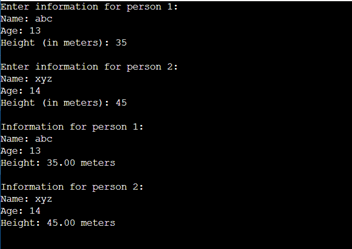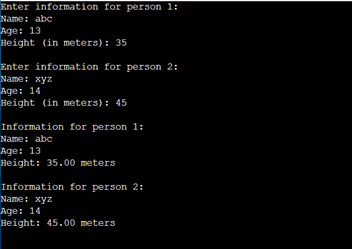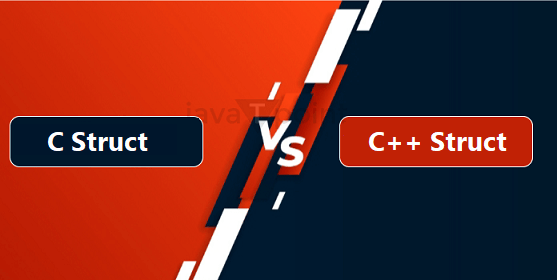Difference Between C Structures and C++ StructuresC and C++ are two computer language mainstays that have maintained their appeal throughout time. Both languages have strong characteristics for developing software, and programmers must be able to distinguish between the subtle differences between them. One such area where variations occur is in the way structures are handled. In this article, we will examine the differences between C and C++ structures to provide insight into how each language handles this essential programming idea. C Structures: The Basis:The early 1970s saw the creation of C, a procedural programming language. In C, structures offer a means of combining related data under a single name. They consist of variables, also referred to as members or fields, representing various data kinds. In contrast to classes in C++, structures in C cannot encapsulate methods and lack member functions. Declaration and Syntax:Declaring a structure in C follows a simple syntax. A structure declaration, which defines the architecture for a user-defined data type, usually exists outside of any function. As an illustration, consider this: Declare a variable in a structure: struct Student s1; Let's take a C program to show how to use structures. For this example, we'll construct a structure named Person to hold personal data like name, age, and height. After that, the information on two people will be created and displayed using this structure. Program:Let us take an example to illustrate the use of structure in C. Output: 
Explanation: The code is explained as follows:
C++ Structures:Object-oriented programming features were introduced by Bjarne Stroustrup in the 1980s with the development of C++, which is an extension of C. Structures were redesigned in C++ to include several characteristics that bring them closer to classes. Declaration and Syntax:In C++, structures, also known as "structs" can contain both data and member functions. The syntax for declaring a struct in C++ is similar to that of C, using the struct keyword followed by the struct's name and its body enclosed in curly braces {}. Declaring a variable in a C++ structure: Student s1; The following is an instance of C++ program. In this instance, we'll construct a structure called Person to hold personal data about a person, including their name, height, and age. We'll also provide information using a member function in the structure. Program:Let us take an example to illustrate the use of structure in C++. Output: 
Explanation: The code is explained as follows:
Differences between C Structures and C++ Structures:
There are several differences between the C Structure and C++ Structure. Some main differences between the C Structure and C++ Structure are as follows: Member Purposes:C Structures: In C, structures are limited to storing data members or variables and they are incapable of incorporating member functions. C++ Structures: It is often called "structs". C++ structures are capable of having member functions. It makes it possible for C++ structures to encapsulate data and behavior, making distinguishing between classes and structures harder. Control of Access:C Structures: By default, every member of a C structure has public access. Access specifiers such as public and private do not exist. C++ Structures: C++ structures support public, private, and protected access specifiers. By default, members of structures are private which promotes data hiding and encapsulation. Developers can specifically specify access levels of members. Memory Handling:C Structures: C's structures make managing memory easier. Memory allocation and release for structure variables are the responsibilities of programmers. C++ Structures: Similar to classes, C++ structures can include constructors and destructors that can use dynamic memory allocation and deallocation to automate memory management. Default Access for Members:C Structures: By default, all members of C structures have open access. By default, there is no notion of private or protected members. C++ Structures: Members of a structure in C++ have private access by default. Developers must explicitly utilize the public: access specifier to make them public. Encapsulation:C Structures: Encapsulation is not present in C structures. They are merely data containers with no built-in means of combining data and behaviour. C++ Structures: C++ structures allow encapsulation by incorporating member functions and access control. It makes it possible to combine data with related processes into a single entity. It is essential to comprehend these distinctions when switching between C and C++ or deciding which language is best for a project. C++ structures offer characteristics that extend beyond the fundamental data-organizing capabilities of C structures, giving a more thorough and object-oriented approach. |
 For Videos Join Our Youtube Channel: Join Now
For Videos Join Our Youtube Channel: Join Now
Feedback
- Send your Feedback to [email protected]
Help Others, Please Share









